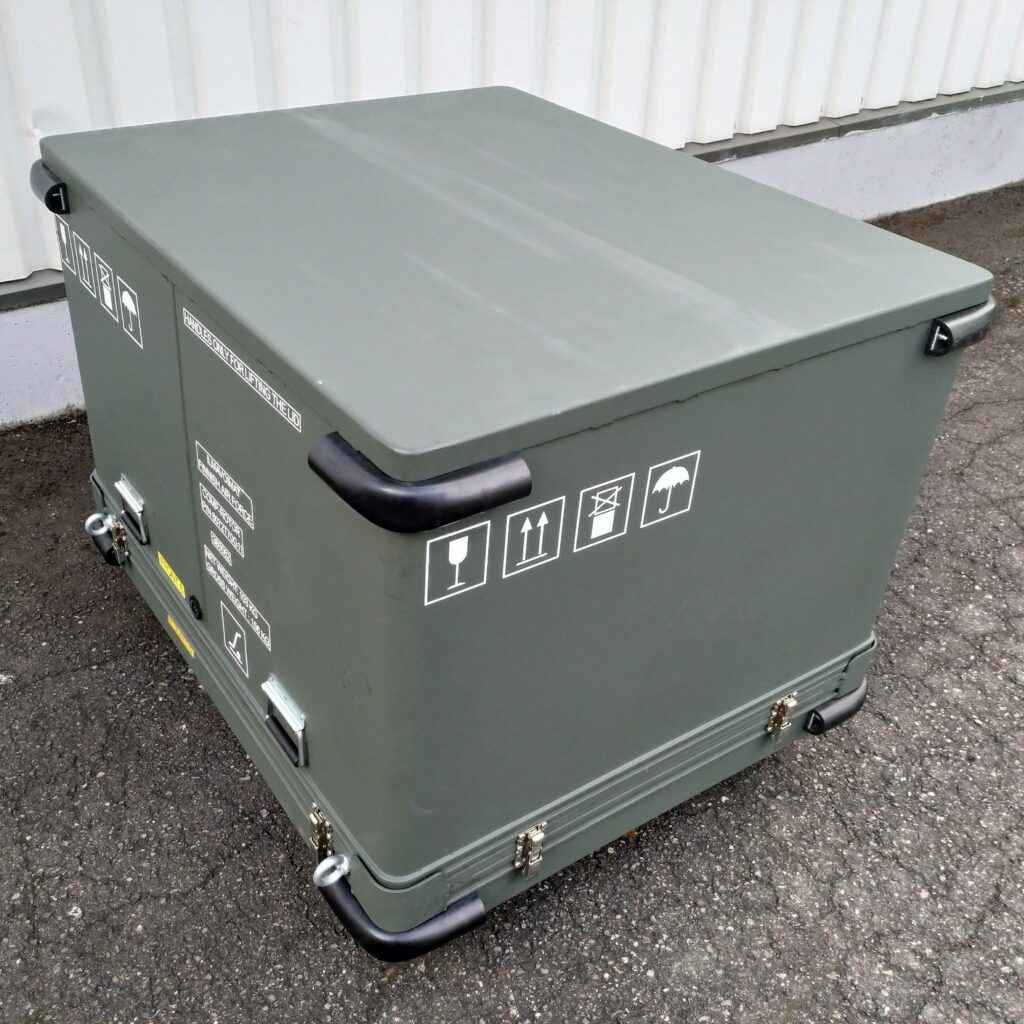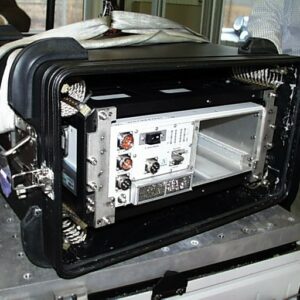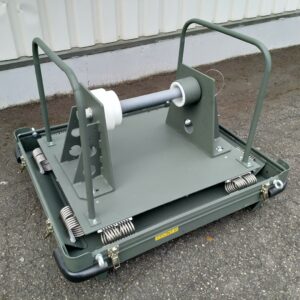Transport cases

Specialized packaging and transport cases provide excellent protection for the devices placed inside them. Protection can be implemented using various techniques, with the most suitable methods chosen in collaboration with the customer.
Armeka has extensive experience in resolving challenges posed by vibration, shock impacts, ESD, EMC, and EMP in demanding conditions.
Various plastics, metals, composites, or their combinations can be used in the shell structure. Material choices are guided by the required level of protection. The enclosures provide effective protection for devices transported on land, at sea, and in the air.



Transport cases in operating environments
Information about various stresses and the use of protective cases
Devices protected by special packaging are usually highly expensive. Proper protection ensures the reliability of the entire transportation chain and saves on maintenance costs. While devices are “safe” when installed in a machine, once detached, they are exposed to unpredictable stresses and risks in the environment. By using specialized packaging, these risks are minimized..
Mechanical stress includes vibration and shocks.
Vibration is typically induced by the mode of transportation (car, airplane, ship, etc.), and the nature of vibration varies with these modes of transport. Impact stresses, on the other hand, often occur during the handling of the device. In practice, the stresses caused by vibration never occur alone; factors like humidity, corrosion, heat, etc., accelerate them.
Problems
Vibration and shocks lead to structural fatigue, a significant reduction in the device’s lifespan (economically), and occasional malfunctions. Delicate bearings in gyro devices can be damaged.
ESD (electrostatic discharge)
Static electricity is generated whenever there is movement. Packages and individuals handling them become charged with static electricity if not taken into account. Eliminating electrical disturbances is advisable in the design phase: Solutions vary for different phenomena (ESD, EMC, EMP). Common solutions for ESD problems involve grounding (wristbands) and semiconductive materials. These aid in controlled dissipation of charge buildup and potential discharges.
Problems
A static electric shock is an unpleasant experience for humans and causes latent faults in electronics that are difficult to predict (lifespan, reliability). ESD must be considered, especially when handling unprotected connectors!
EMC/EMI (electromagnetic compatibility/interference)
Electromagnetic radiation is present everywhere: for example, mobile phones and radars produce it. Field strengths vary. Enclosures can improve protection, but it is essential to design the device so that it interferes with/ is disturbed by its surroundings as little as possible.
In enclosure solutions (specialized packaging), metallizations and special seals (electrical tightness) are commonly used, similar to a Faraday cage. Problematic areas for protection are openings, penetrations, etc.
EMC protection usually also enhances the level of ESD protection. Radiation is difficult to detect without measurement. Therefore, eliminating electrical disturbances in the design phase is advisable.
Problems
Electromagnetic radiation interferes with the operation of devices. It can cause the device to malfunction if it induces itself into circuitry.
EMP (electromagnetic pulse)
Electromagnetic pulses occur only sporadically (lightning, nuclear explosion). Enclosures can improve the protection of devices against them too. The same principles apply in protection as in EMC, but the materials and thicknesses used are of a different class. Vital equipment may need protection against this phenomenon.
Problems
A strong electromagnetic pulse destroys all electronics within its reach.
Cases are custom-crafted for each device, providing protection against various environmental stresses. The production of protective special bags, packaging, and casings involves a meticulous pre-study, including:
- Environmental assessment (transportation, handling, etc.).
- Collection of existing data (standards, measured data) or field measurements.
- Determination of the device’s environmental tolerance.
- Design and approval of structural solutions based on these findings.
- Manufacturing prototypes (matching the device’s weight and dimensions).
- Conducting necessary tests on the prototype’s functionality (drop, impact, vibration tests).
- Preparation of measurement protocols and other documents.
The packaging incorporates special materials and tested components, featuring properties that may not be visible to the naked eye. Production batches are small, often requiring the creation of specialized tools. A reliable supplier must heavily invest in the product development and research. Armeka Oy consistently participates in R&D projects with partners such as Vtt, Tekes, the Finnish Defence Forces, and industry collaborators, focusing specifically on enhancing the expertise described here.
- Only use the packaging for its intended device.
- Place the device in the packaging according to the instructions.
- Do not place any extra items or materials in the packaging that may disrupt its function during transportation and storage (e.g., materials that charge ESD-protected structures). Foreign or incorrect items can cause the failure of vibration and shock damping. Chemicals leaking from the device (e.g., hydraulic oil) can damage the materials if not properly protected.
- Use only recommended cleaning agents for cleaning specialized packaging.
- Do not send or store the device in a faulty package; instead, deliver it for maintenance.
- Do not store the specialized packaging in an environment for which it is not designed (e.g., outdoors or in conditions with significant temperature variations).
- Follow the markings and instructions on the specialized packaging..